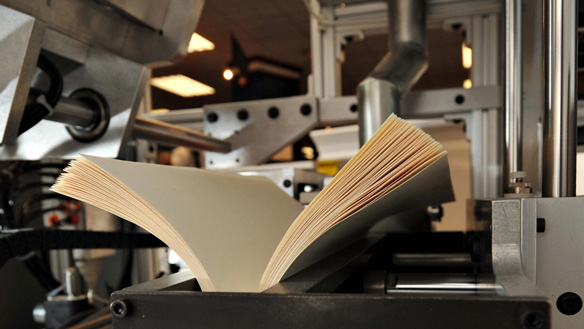
With the increasing emphasis on e-books and the ease of digital publishing, you may think the saying “don’t judge a book by its cover” doesn’t really apply anymore. After all, a book cover displayed on the screen of a tablet doesn’t hold the same weight as it does on the front of a hardback book.
However, data suggests we shouldn’t forget that old saying just yet. A recent study by Voxburner surveyed people ages 16 to 24 on their reading preferences. The findings were surprising — 62 percent preferred print books over e-books. Think about that statistic for a minute and its implications for even higher percentages among older generations. If the crowd that chronicles their lives through selfies and status updates still recognizes the power of print, then we should, too.
Consumers don’t want to lose the feel of a book’s spine, the sensation of hard- or softback covers or the charming old book smell. There’s something nostalgic about holding a physical tome in your hands.
For authors considering print books versus e-books, can you afford to pass up that emotional connection? Utilizing print, even in small quantities, can benefit your readership and serve as an excellent way to showcase your work.
6 Things to Consider When Printing a Book
If you’re looking to embrace the advantages of print, consider these factors when choosing a company to produce your books.
1. Check the accepted file formats. When organizing the files that are going to print, be sure to check the company’s accepted file formats first. For the best quality, look for a printer that accepts multiple file types. Different forms of content are meant to be saved in different file formats. For example, a photo should be saved as a high-quality JPEG, text as a Word document, and graphics as a PNG. If the company you’re considering doesn’t give you flexibility, it might be wise to look for a specialty printer that will.
2. Utilize an in-house designer and online proofing. Two more features to look for when choosing a printing service include in-house design and online proofing. An in-house designer will ensure that your book is laid out professionally, and the ability to proof the pages online before the book goes to print will ensure you catch any content mishaps before it’s too late.
3. Consider the printing options. Look for a company that specializes in both offset and digital printing. This will give you flexibility and ultimately make the project more cost-efficient. Advantages to digital printing include lower setup costs for short runs, lower minimum quantities, and the ability to print only the amount needed. However, offset printing is the cost-effective route when dealing with increased quantities, large paper types, and special finishes, such as metallic and Pantone inks.
4. Research the best binding method for you. Depending on the size of your book, there are a few binding options available to help scale back the cost. The most professional-looking books are usually perfect bound, which is ideal for books of 120 pages or more. However, if you’re working with 120 pages or fewer, I recommend square-back binding. This type of binding is a fairly new option that offers the same professional, polished look of a perfect bound book, but for a fraction of the cost.
5. Don’t forget the importance of paper. Most printers start with 70# paper — the equivalent weight of regular copy paper — and go up to as thick as 200# cover. This type of paper has either a smooth, glossy finish or a matte finish. It produces vibrant colors and professional image quality. This type of paper is ideal for covers and special inserts. For the main pages of the book, consider an 80# dull-matte text, which is finely coated with a non-gloss finish. This will provide an excellent opaque base for crisp, easy-to-read typography.
6. Choose your typography carefully. When choosing a font, your first priority should be readability. Unique or paid fonts can work in moderation for a cover or the first few lines of a chapter, but when it comes to the story, be sure to use a highly legible font. Body copy usually calls for a standard font, such as Times New Roman, Garamond, or Book Antiqua. Size can vary based on the size of the book, your target readership, and your layout.
When it comes to book publishing, print is far from dead. By taking the above factors into consideration, you can feel confident that the finished physical product is just as good as the story it holds.
Get an Editorial Review | Get Amazon Sales & Reviews | Get Edited | Get Beta Readers | Enter the SPR Book Awards | Other Marketing Services






















Or if you are even modestly tech-saavy, you can go with IngramSpark (to get in bookstores and online including Amazon), CreateSpace (to get on Amazon) or Lulu (printing for yourself or retail sales). None exclude the others and you can use the same PDF interior for IngramSpark and Amazon.
Thank you very much for all of the tips you gave on printing your own book. I like how you said that it is important to take into consideration the best binding method depending on the length and size of your book. I think that it would be essential to find a bookbinding service that is reliable and can help you choose the best method for your book.